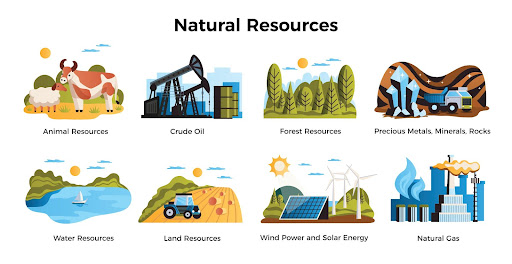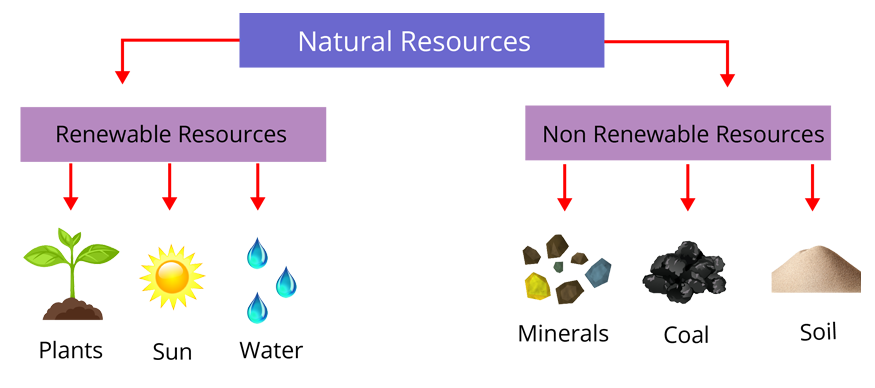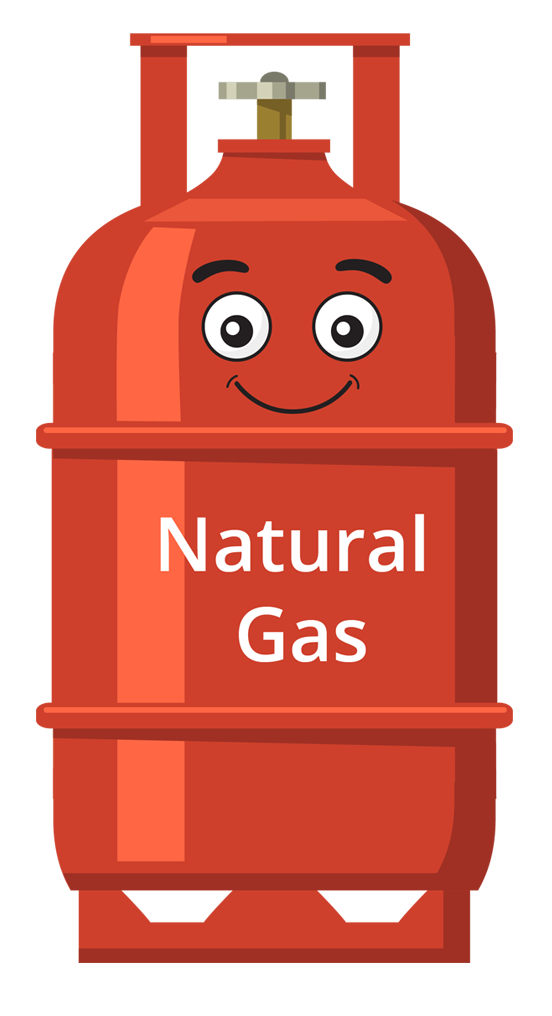What are Resources?
Natural resources are resources naturally available without human intervention, including sunlight, air, water, land, minerals, vegetation, and wildlife. These resources are classified into two categories: renewable and non-renewable. Both types are essential for human survival and development. Let’s explore the key differences between renewable and non-renewable resources.


What is a Renewable Resource?
Renewable resources are those that cannot be depleted. They are always available and thus could be reused.
What is a Non-renewable Resource?
Natural resources that are limited in quantity are referred to as non-renewable resources. These resources cannot be supplied or regenerated in a short duration of time. These resources cannot be reused.
Fun Facts
Non-renewable resources like fossil fuels release harmful chemicals into the air when they are burned.
Renewable resources are so abundant that they rarely run out.
One wind turbine can generate enough electricity to power 1,400 households.
Renewable energy creates three times more jobs than fossil fuels can create.
Non-renewable resources like fossil fuels release harmful chemicals into the air when they are burned.
Renewable resources are so abundant that they rarely run out.
One wind turbine can generate enough electricity to power 1,400 households.
Renewable energy creates three times more jobs than fossil fuels can create.
Summary
Resources refer to all the materials present in our environment which are used by living beings. Natural resources are materials present in nature and are used by humans. Renewable resources are those which cannot be depleted and could be reused. Examples of renewable resources include air, water, soil, solar energy, etc. Natural resources that are limited in quantity are referred to as non-renewable resources. Examples are coal, petroleum, etc.
Learning By Doing
In the given table, identify the following as renewable and non-renewable resources and name them.

1. ____________ resources | 
2. ____________ resources |

3. ____________ resources. | 
4. _______________ resources. |


FAQs on All About Renewable and Non-renewable Resources
1. What are renewable and non-renewable resources?
Renewable resources are natural resources that replenish over time, such as sunlight and wind. Non-renewable resources are limited and cannot be replenished, such as fossil fuels.
2. What is the difference between renewable and non-renewable resources?
The key distinction between renewable and non-renewable resources is that renewable resources regenerate naturally and are sustainable, while non-renewable resources deplete over time and are finite.
3. What are the 5 major differences between renewable and non-renewable resources?
They differ in depletion, availability, environmental impact, cost, and infrastructure requirements.
4. What are examples of renewable and non-renewable energy resources?
Renewable energy resources include solar, wind, and geothermal energy. Non-renewable energy resources include coal, oil, and natural gas.
5. Why is it important to distinguish between renewable and non-renewable resources?
Understanding the difference helps in promoting sustainability and efficient use of natural resources.
6. What are renewable and non-renewable energy resources used for?
Renewable energy resources are used for sustainable electricity generation, while non-renewable resources are primarily used for fuel and industrial processes.
7. What is the significance of renewable resources?
Renewable resources are crucial for sustainable development and reducing environmental pollution.
8. How do renewable and non-renewable resources impact the environment?
Renewable resources typically have a low carbon footprint, while non-renewable resources contribute significantly to pollution and climate change.
9. Can natural resources be both renewable and non-renewable?
No, natural resources are categorised as either renewable (e.g., wind) or non-renewable (e.g., fossil fuels) based on their availability and regeneration.
10. What are the challenges of using renewable and non-renewable energy resources?
Renewable resources require expensive infrastructure, while non-renewable resources are limited and harmful to the environment.
11. How do renewable resources differ from non-renewable resources in terms of cost?
Renewable energy sources have high initial costs, whereas non-renewable energy is generally cheaper upfront but costly in environmental impact.
12. What are the similarities between renewable and non-renewable resources?
Both types of resources are essential for human survival and are used to generate energy and meet daily needs.
13. How do renewable and non-renewable resources affect energy sustainability?
Renewable resources support long-term energy sustainability, while non-renewable resources pose challenges due to their limited availability.
14. Why should we prioritise renewable resources over non-renewable resources?
Renewable resources help combat climate change, reduce dependency on finite resources, and ensure a sustainable future.










